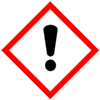|
|
|
Acetic Acid Glacial & Solution ---- Boric Acid ---- Erythorbic Acid ---- Formaldehyde Solution ---- Formic Acid ---- Fumaric Acid ---- Gallic Acid ---- Gluconic Acid ---- Glutaraldehyde ---- Glycerophosphoric Acid ---- HEDP ---- Hyaluronic Acid ---- Lactic Acid ---- Lactobionic Acid ---- Lauric Acid or Dodecanoic Acid ---- Maleic Acid ---- Malic Acid ---- Maltobionic Acid ---- Myristic Acid ---- Oleic Acid ---- Orotic Acid ---- Peracetic Acid ---- Propionic Acid ---- Selenious Acid |
|
Orotic Acid SDS MSDS of Manufacturers & Exporters
Orotic Acid SDS, Safety Data Sheet 1. Product Identification Product Name & Other Names: Orotic Acid or 6-Carboxyuracil, Uracil-6-carboxylic Acid, Vitamin B13. 2. Hazards Identification GHS, Globally Harmonized System Classification in accordance with 29 CFR 1910 Acute toxicity, oral Category 4, H302 Labeling according to Regulation (EC) No 1272/2008
Signal Words: Warning Hazard statements: Precautionary statements: 3. Composition/Information on Ingredients Product Name & Other Names:Orotic Acid or 6-Carboxyuracil, Uracil-6-carboxylic Acid, Vitamin B13. 4. First Aid Measures Always get medical attention after the first aid is over. Inhalation:Remove to fresh air. Give oxygen if breathing is difficult; give artificial respiration if breathing has stopped. Keep person warm and quiet; get medical attention. 5. Fire Fighting Measures Fire: Not considered to be a fire hazard. May be combustible at high temperature. 6. Accidental Release Measures Personal precautions, protective equipment, and emergency procedures: Avoid breathing dust/fumes/gas/mist/vapors/spray. Use individual protective equipment (waterproof boots, suitable protective clothing, safety glasses, etc.). Do not approach facing the wind. 7. Handling and Storage Precautions for safe handling: Apply according to good manufacturing and industrial hygiene practices. Ensure proper ventilation. In case of insufficient ventilation, wear suitable respiratory equipment. Wash thoroughly after handling. Do not drink, eat, or smoke while handling. Avoid contact with skin, eyes, and clothing. Minimize dust generation. Avoid breathing dust/fumes/gas/mist/vapors/spray. Use individual protective equipment (waterproof boots, suitable protective clothing, safety glasses, etc.). 8. Exposure Controls/Personal Protection Airborne Exposure Limits: None established. 9. Physical and Chemical Properties Appearance: White to off-white crystalline solid. 10. Stability and Reactivity Stability: Stable under ordinary conditions of use and storage. Forms explosive mixtures with air on intense heating. Fine distribution, when whirled up a dust explosion potential may generally be assumed. 11. Toxicological Information LD50 oral rat: No information found. 12. Ecological Information Toxicity to daphnia and other aquatic invertebrates: No information found. 13. Disposal Considerations 14. Transport Information Land Transport DOT USA, TDG Canada & ADR/RID Europe: Not controlled. 15. Regulatory Information USA: 16. Other Information DISCLAIMER: The information and recommendations set forth herein are presented in good faith and believed correct as of the date hereof. It is compiled from various sources, and it is not necessarily all inclusive nor fully adequate in every circumstance. In addition, these suggestions should not be confused with nor followed in violation of applicable laws, regulations, rules, or insurance requirements applicable. This MSDS sheet is intended only as a guide to the appropriate precautionary handling of the material by a professionally trained person using this product. Individuals receiving the information must exercise their independent judgment in determining its appropriateness for a particular purpose. |
Crystal Clear Products and the group companies are manufacturing chemicals since several decades. We have automatic vacuum operated titanium evaporators and SS316 equipments to produce top grade of chemical products. We have toll manufacturers and representatives in China, UAE, Europe, Canada & USA and agents & customers in all countries like USA, Canada, Europe, UAE, South Africa, Tanzania, Kenya, Egypt, Nigeria, Uganda, Turkey, Mexico, Brazil, Chile, Argentina, Bangkok Thailand, Kaula Lumpur Malaysia, Dubai UAE etc. & sales representative in Chicago, Houston New York & Los Angeles, USA. Associated units are FDA-GMP certified, Halal and/or Kosher certified, REACH registered, ISO-9001, ISO-22000 HACCP certified, Crisil Rated.
Contact Orotic Acid IP BP Ph Eur EP JP USP NF ACS Analytical Reagent FCC Food Grade manufacturers exporters at:

Crystal Clear Products
Plot No-C1-1031-9, GIDC Estate, Panoli, Ankleshwar, Gujarat - 393002. India
Telephone Mobile: 91-7506449333; e-mail: info@crystalclearproducts.org
e-mail: info@crystalclearproducts.org
Manufacturers, Suppliers of IP BP Ph Eur EP JP USP NF FCC Food, ACS Reagent GMP Grades of Chemicals like Orotic Acid
Minified 20 May, 2025





